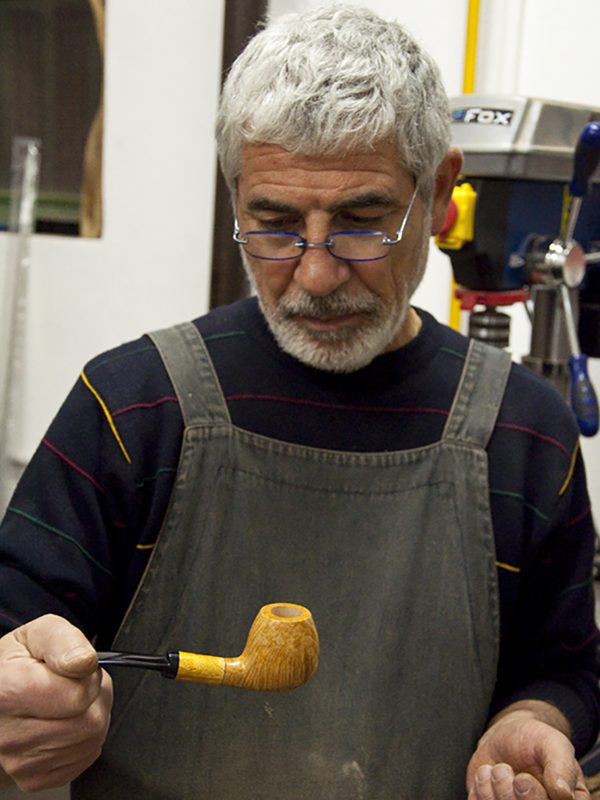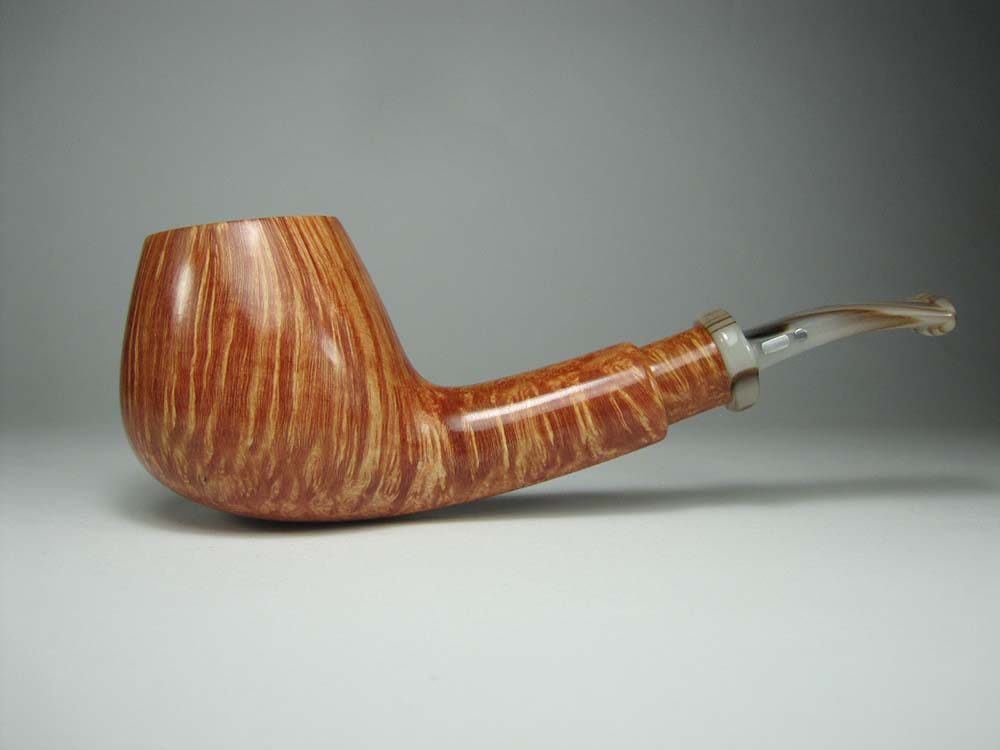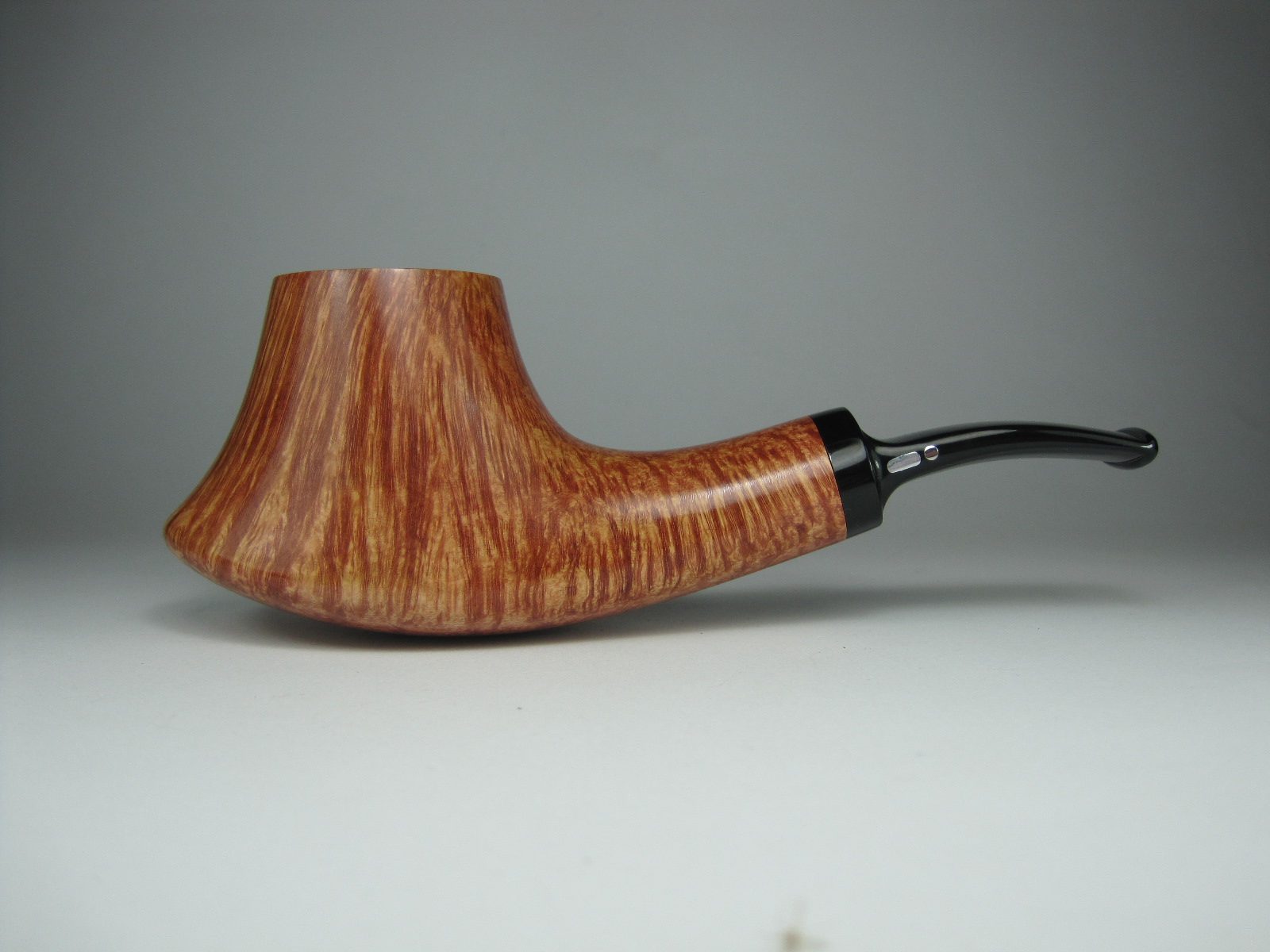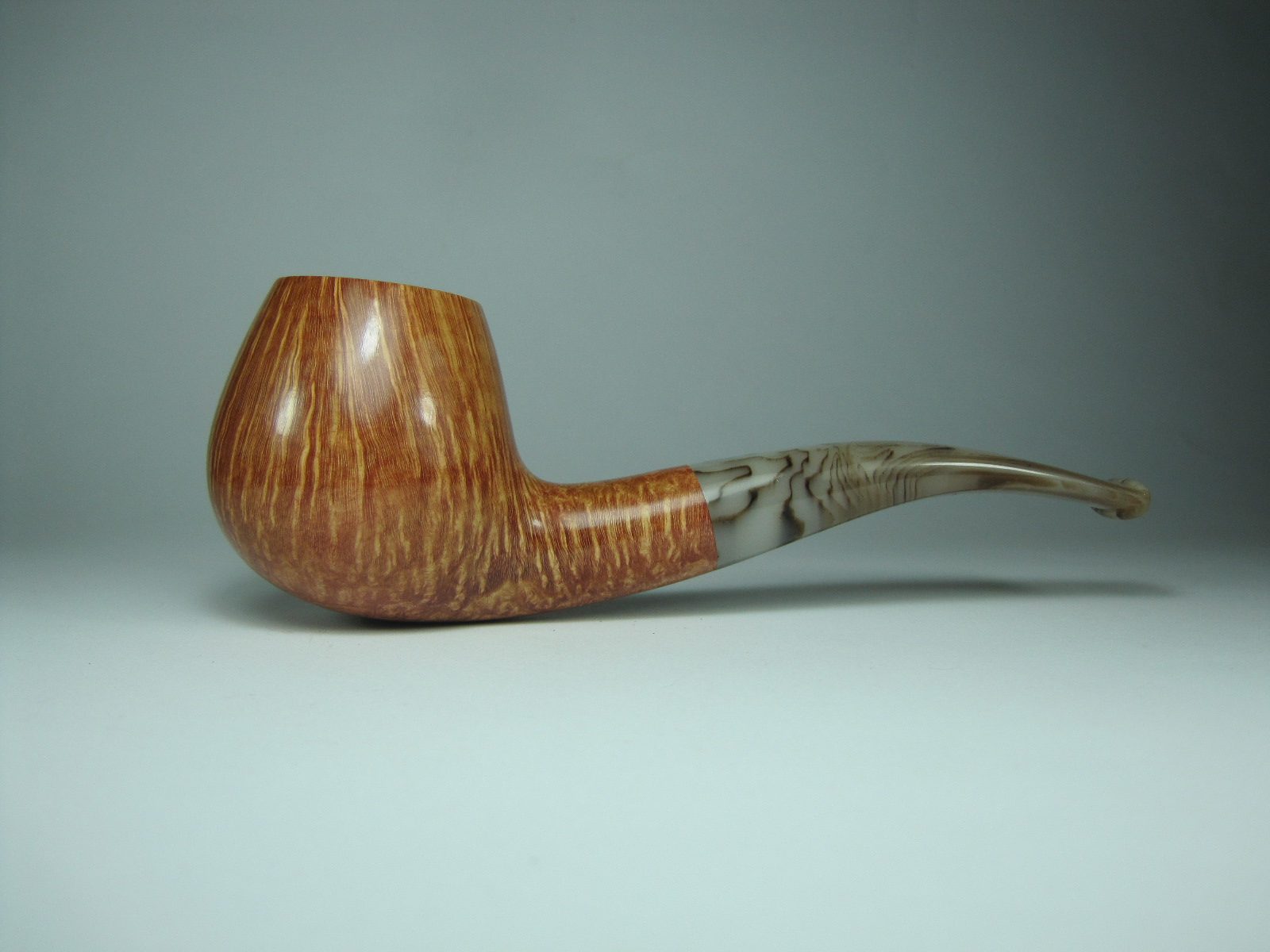{: it}
by Massimiliano Giorgi
Among the excellences of the Marche are the pipe artisans. Some industrial production, but for the most part we are talking about real craftsmanship, often entirely "handmade".
The Marche region is a true "pipe district of excellence": prestigious brands such as Ser Jacopo, Mastro de Paja, Don Carlos are known to all pipe lovers. slow smoke, and they and dozens of others more or less large are derivatives - indirect or otherwise - of the first pipe manufacturer in the Marche region, The Tree Frog doesn't sing. A brand born at the end of the 800th century and which enjoyed success starting after the Second World War, so much so that it generated - in fact - many followers and followers.
In Jesi, in a side street of Corso Matteotti, under the Bisaccioni arch, there is still Tonino Jacono's workshop, probably the most exclusive among Italian pipe makers: beyond the undisputed technical and aesthetic quality of his works, it is also the craftsman, Tonino likes to repeat that he makes a pipe a day.

Just over 300 pipes a year, entirely handmade, from the selection of the briar log (until a few years ago cultivated by his father-in-law, in Calabria), to the finishing.
They range from the cheaper Zen (one of his inventions with interchangeable hobs) to the commemorative ones or esoteric: pipes "carved out" from the best pieces of briar from his warehouse, with which it is possible to highlight the maximum beauty of the wood, the most harmonious grain.
“Take it out: the pipe is already inside the log”: Tonino uses this expression to describe his work and I point out to him that Michelangelo used the same expression for the same concept.
 It's not a stretch at all. Tonino does the same process with the briar that Buonarroti did with the marble: the raw log gives at first glance the idea of what shape it may contain, a shape molded following the design traced by the veins. Then sometimes it happens that when sanding the wood an imperfection comes out, a pebble that remained trapped while the root was growing, the grain that changes path and no longer agrees with the shape that was intended to be given. And then we intervene during construction, we change the shape or style according to what that particular log dictates.
It's not a stretch at all. Tonino does the same process with the briar that Buonarroti did with the marble: the raw log gives at first glance the idea of what shape it may contain, a shape molded following the design traced by the veins. Then sometimes it happens that when sanding the wood an imperfection comes out, a pebble that remained trapped while the root was growing, the grain that changes path and no longer agrees with the shape that was intended to be given. And then we intervene during construction, we change the shape or style according to what that particular log dictates.
The pipe was already inside the wood, all that was left was to remove what was around it.
 This path is not a problem if the creations are entirely by hand and followed one by one according to the particularities of the wood.
This path is not a problem if the creations are entirely by hand and followed one by one according to the particularities of the wood.
And it's not a problem if the smoker has any particular needs. Over the years I have been able to indulge in the whim of a couple of pipes and some accessories that Tonino took from my drawings (which came out in the morning, after a heavy digestion...).
My bizarre requests aside, Tonino Jacono's pipes are constructively perfect: an American buyer, years ago, invited to Milan the five Italian pipe makers who for him were the top: the smokability of their products was known, as was their beauty. He chose two: Tonino remembers that he chose his first, because they were the only ones that remained in balance if placed on a surface, even with a rounded back.
And in fact the bulk of the production of Jacono pipes ends up abroad: the United States, a historic market, and subsequently the countries of the "nouveau riche", such as China and Russia (where I personally had to deliver a small supply to one of his Moscow customers: "Since you're passing by...", he told me. The owner of the shop, a young and jovial Georgian, made me spend an afternoon of amiable chats in the tea room of the place, with a humidor room for cigars, sipping spirits as befitting such a welcoming environment. I tried not to notice the gallows faces at the other tables who were enjoying the afternoon, relieved by the fact that no tattoos of the Well done…
In its 30 years of activity it has churned out more than 10 thousand pipes, many of which are in limited and numbered production. He also found time to climb the highest active volcanoes in the world (first Cotopaxi – 5.897 m – and then, when he stopped smoking again, Ojos del Salado, 6.893 m), to cross the Sahara by bicycle, to run a couple of times the 225 km journey that Philippides took to announce the victory at Marathon, plus many seasons as a long-distance runner with some national titles.
Slow smoking and long running could be Tonino Jacono's motto. IN reality they are sides of the same coin: doing things with care, down to the detail, no matter how difficult or complex.{:}{:en}Among the excellences of the region Marche there are the artisans of pipes. Some of them are industrial manufacturers, but most of them actually produce hand-crafted pipes, often entirely “hand-made”.
In the Marche region there is a real “district of excellent pipes”: prestigious brands like Ser Jacopo, Mastro de Paja, Don Carlos are well-known to everyone who loves the slow smoking, and those brands together with dozens of other smaller or bigger producers took their know-how – directly or indirectly – from the first producer of pipes in the Marche region, The Tree Frog doesn't sing. The brand was created at the end of the Nineteenth century, and became well known in the post World War II, so that many imitators and devotees spread.
 In Jesi, in a cross street of Corso Matteotti, under the arch Bisaccioni, there is still the workshop of Tonino Jacono, probably the most exclusive among the Italian pipe artisans: moreover, the indisputable technical and aesthetical quality of his works, Tonino is also The Artisan, in fact he underlines that he hand-crafts one pipe per day. A bit more than 300 pipes per year, completely handcrafted, from the selection of the log of briarroot (grown in the region Calabria by his father-in-law until a few years ago), up to the finishing touches.
In Jesi, in a cross street of Corso Matteotti, under the arch Bisaccioni, there is still the workshop of Tonino Jacono, probably the most exclusive among the Italian pipe artisans: moreover, the indisputable technical and aesthetical quality of his works, Tonino is also The Artisan, in fact he underlines that he hand-crafts one pipe per day. A bit more than 300 pipes per year, completely handcrafted, from the selection of the log of briarroot (grown in the region Calabria by his father-in-law until a few years ago), up to the finishing touches.
From the less expensive pipe which is named Zen (Tonino's own invention with interchangeable chambers) to the commemorative or esoteric pipes: pipes “extracted” from the best pieces of briar-root in his warehouse, that highlight the beauty of the wood, and its most harmonious veining.
“Extracted: the pipe is already in the log of briar-root”: Tonino uses these words to describe his works and I notice that also Michelangelo used the same words to describe the same concept.
It is not a stretch. Tonino works the root in the same way that Buonarroti used to do with marble: the raw log gives at first sight the idea of which shape it contains, the shape is then modeled following the lines of the veining. Then sometimes when you work the wood an imperfection comes out, a smal stone imprisoned during the growth of the root, the veining turn direction and do not match with the shape that was intended. In this case, the artisan changes shape or style in accordance with the log of briarroot.
The pipe was already inside the wood, you only had to remove what was around it.
This way of working is not a problem if you handcraft the pipe and you can inspire from every piece of wood according to the characteristics of the wood.
And it's not even a problem when the smoker had special needs. During the years, I managed to have a couple of pipes and accessories that Tonino created out of my drawings (in the morning after a long digestion…).
Apart from my bizarre requests, Tonino Jacono's pipes are perfectly manufactured: an American buyer invited years ago in Milan the top five Italian pipe artisans: the smokeability of their products was well known, just like their beauty. He chose two pipes: Tonino remembers that his pipes were chosen at first, since they were the only ones that could stand on the table, even with a rounded leg.
In fact the majority of the production of Jacono's pipes is exported abroad: the US has been an historical market for those pipes, and later the “new rich” countries, like China and Russia (where I personally delivered pipes to one of the customers in Moscow: “Since you are going ther…” he told me. The owner of the shop in Moscow is a young and jovial Georgian guy, I spent a lovely afternoon with him chatting in the tea room of the shop, including a humidor room for cigars, sipping spirits as usual in such cozy places. I tried not to bother too many other people around, satisfied that on their shirts there was no Well done tattoo…
In his 30 year long career he produced more than 10.000 pipes, most of them are selected, limited, and even numbered one by one. He also took time to climb the highest active volcanoes in the world (firstly the Cotopaxi – 5.897 meters high, and then, Ojos del Salado, 6.893 meters high). Then he crossed the Sahara desert by bike, a couple of times he ran 225 km along the track that took Pheidippides to announce the victory of Marathon, and then several season sas runner on long distances with some national medals.
Slow smoking and long running, this could be Tonino Jacono's motto. In reality, it is just two sides of the same coin: do things carefully, up to the details, it does not matter how hard and difficult.{:}
